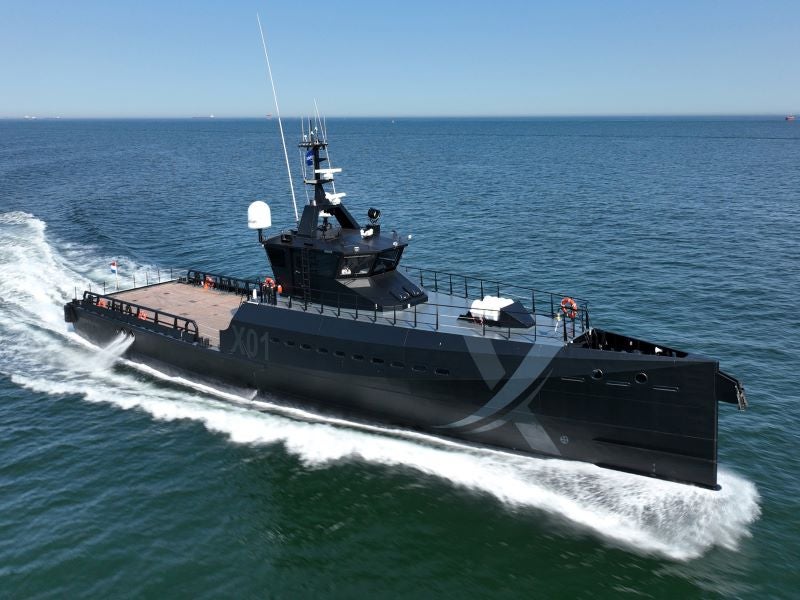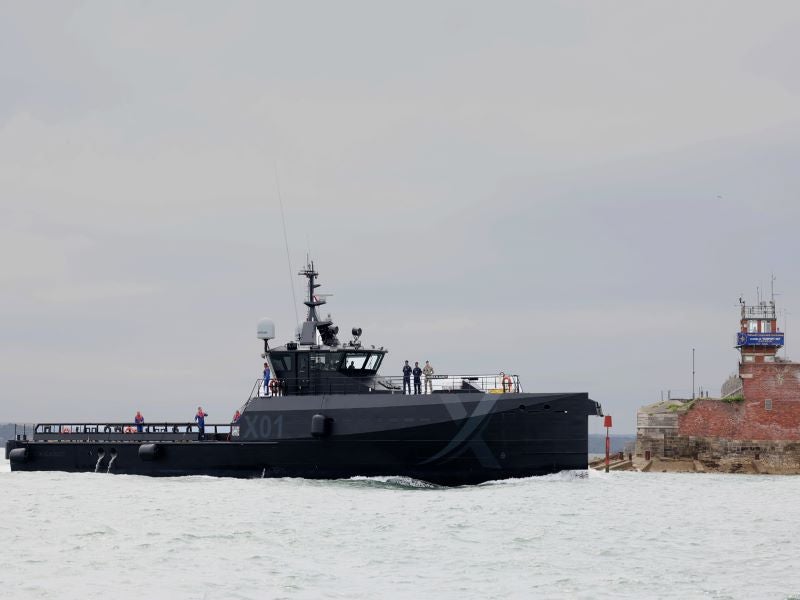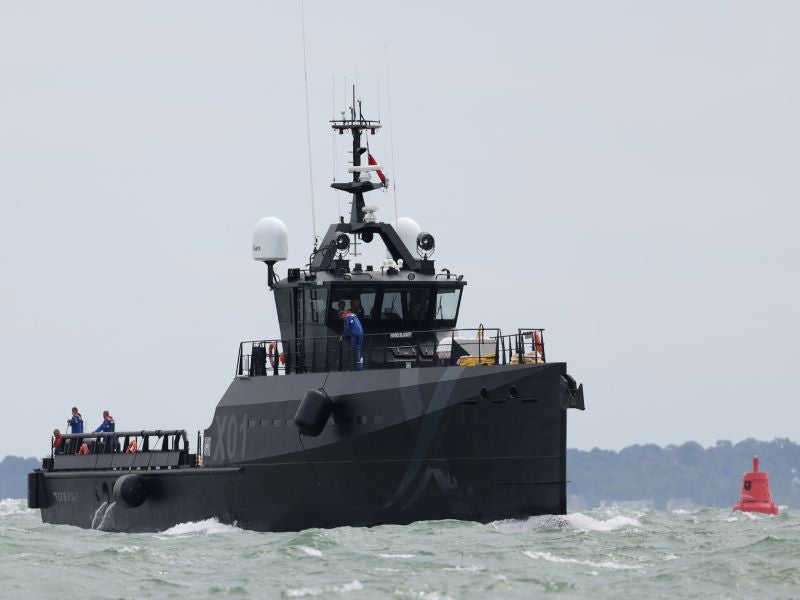XV Patrick Blackett is a new experimental vessel that will be used by the UK Royal Navy as a testbed and trials ship.
The vessel was unveiled by the Royal Navy at Her Majesty’s Naval Base (HMNB) in Portsmouth, UK, in July 2022. It was procured for use by NavyX, the navy’s experimentation and innovation branch, as a testbed to support experiments with autonomous systems and advanced technologies.
NavyX tests new technologies and concepts and focuses on accelerating their availability for the naval forces.
The vessel is named in honour of Patrick Blackett, a scientist, former Royal Navy sailor, and Nobel Prize winner for his work in the field of Physics in 1948. It is expected to undergo potential autonomous technology upgrades and participate in future Royal Navy and Nato exercises.
XV Patrick Blackett will reduce the burden on other navy ships to be used as test platforms while also enhancing NavyX’s cooperation with industry and academia partners.
NavyX had procured the Maritime Demonstrator Fors Operational eXperimentation (MADFOX) autonomous vessel in 2021.
Design and features
XV Patrick Blackett is a modified Damen Shipyards Group’s (Damen) Fast Crew Supplier (FCS) 4008 fitted with necessary modifications to be able to meet the mission requirements of the Royal Navy.
The vessel features a steel hull, while aluminium is used as the superstructure material.
The axe-bow hull design provides enhanced stability and seakeeping, which is critical during the deployment of equipment into the sea or air.
The vessel has a length of 42m and a gross tonnage of 270t. It can achieve a maximum speed of up to 20kt. It will be manned by a crew of five Royal Navy personnel.
The experimentation vessel has a cargo deck area of 140m² with a load capacity of 2.5t per m². The large deck space will accommodate unmanned aerial vehicles (UAVs), autonomous underwater vehicles (AUVs) and other equipment. The internal area of the base platform design was meant to accommodate seating for 100 personnel and has been transformed into a meeting room and an operations centre.
Container secure points are installed on the work deck to be able to accommodate a range of payloads.
The plug and play configuration of the vessel is expected to support the navy’s new PODS (Persistently Operationally Deployed Systems) concept, which involves swappable modules that can be fitted to a surface fleet to provide the equipment a ship needs during missions at sea without the requirement to go to a port.
The assets housed in the PODS can include an autonomous surveillance and reconnaissance boat, and drones to deliver supplies and humanitarian assistance and disaster relief stores to support Royal Navy operations.
Nautical and communication equipment
The FCS 4008 model features an integrated navigation system. It is equipped with two 1000W searchlights, an X-Band radar system, and a non-electronic chart display and information system (ECDIS).
The navigation system includes a global positioning system (GPS), an automatic identification system (AIS), and an autopilot system. The vessel uses magnetic and GPS compasses and an echo sounder.
In addition, the vessel can be fitted with optional equipment such as night vison camera, dynamic positioning system (DP1), remote monitoring system and data communication systems including Iridium, very small aperture terminal (V-SAT), FleetBroadband, 4G, Wi-Fi and local area network (LAN).
Engine and propulsion
The vessel is powered by four Caterpillar engines with a power output of 6,500kW. Each engine drives a fixed pitch propeller.
The ship is fitted with four Reintjes WVS series gearboxes and one hydraulically driven bow thruster.
The vessel’s fuel filtration unit uses a non-self-cleaning dynamic separator. The engine room is fitted with two supply fans for ventilation and Stat-X fixed fire-fighting system with fire extinguishers.
The FCS 4008 is also equipped with two generator units with an output of 99ekW each.
Contract details
The UK Ministry of Defence (MoD) rolled out a tender for the procurement of an experimentation vessel in December 2021.
The tender called for a vessel with a length of less than 48m, a maximum draught of 3.5m, and a minimum range of 2,500 nautical miles.
Damen was awarded a contract to supply the vessel and provide a three-year support package. The company’s research and development (R&D) department is expected to support the NavyX in certain experiments.










